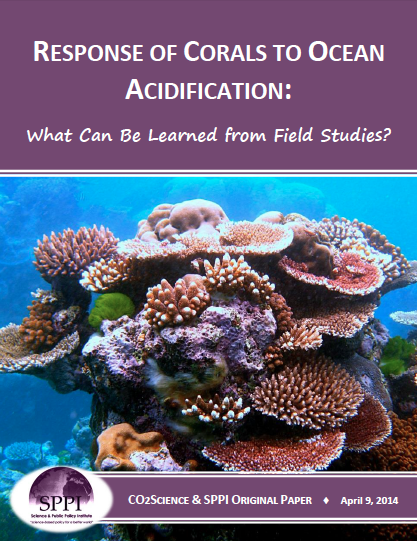News / Science & Technology
RESPONSE OF CORALS TO OCEAN ACIDIFICATION
What Can Be Learned from Field Studies?

It has been predicted that rates of coral calcification, as well as the photosynthetic rates of their symbiotic algae, will dramatically decline in response to what is typically referred to as an acidification of the world's oceans, as the atmosphere's CO2 concentration continues to rise in the years, decades, and centuries to come. As ever more pertinent evidence accumulates, however, the true story appears to be just the opposite. This summary examines such evidence obtained from field-based studies conducted in the natural ocean.
Field studies hold an advantage over laboratory-based studies in that they more aptly represent conditions in the real world, many of which conditions are impossible or impractical to incorporate into a laboratory setting. Because of this, the findings produced in field studies tend to hold more weight and help to establish greater clarity on a scientific topic or question under investigation than findings produced in a laboratory setting. Such is the case with ocean acidification. Whereas positive, negative and neutral effects from this phenomenon have been observed on corals in the laboratory setting, field-based studies in the ocean reveal the situation is much less dire than the IPCC predicts, with many studies suggesting a modest decline in oceanic pH may even favor coral calcification and growth.
Pelejero et al. (2005), for example, developed a reconstruction of seawater pH spanning the period 1708-1988, based on the boron isotopic composition (ð11B) of a long-lived massive coral (Porites) from Flinders Reef in the western Coral Sea of the southwestern Pacific. Results indicated that "there [was] no notable trend toward lower ð11B values" over the 300-year period investigated. Instead, they say that "the dominant feature of the coral ð11B record is a clear interdecadal oscillation of pH, with ð11B values ranging between 23 and 25 per mil (7.9 and 8.2 pH units)," which "is synchronous with the Interdecadal Pacific Oscillation." Furthermore, they calculated changes in aragonite saturation state from the Flinders pH record that varied between ~3 and 4.5, which values encompass "the lower and upper limits of aragonite saturation state within which corals can survive." Despite this fact, they report that "skeletal extension and calcification rates for the Flinders Reef coral fall within the normal range for Porites and are not correlated with aragonite saturation state or pH." Thus, contrary to claims of the sensitivity of coral calcification rate to changes in pH and aragonite saturation state, they found that huge cyclical changes in these parameters had essentially no detectable effect on either coral calcification or skeletal extension rates.
